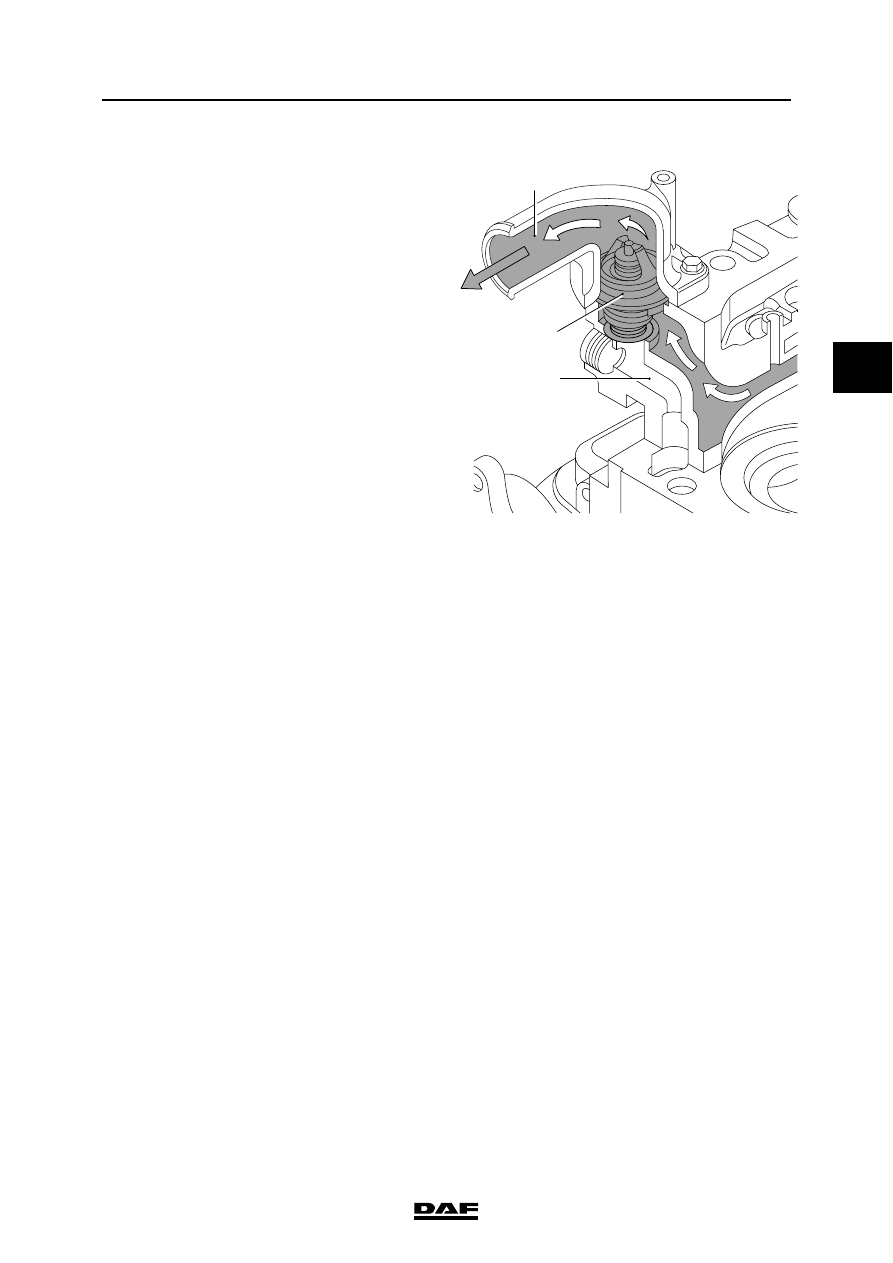DAF CF65, CF75, CF85 Series . Manual - part 207

©
200351
3-3
Description of components
CE-ENGINE COOLING SYSTEM
ΧΦ65/75/85 series
2
3
Thermostat fully opened
The temperature of the coolant has further
increased. The supply channel (B) to the radiator
is fully opened and the bypass channel (A) is fully
closed.
The entire coolant circulation now flows via the
supply channel (B) to the radiator where it is
cooled before flowing back to the water pump.
In the event of excessive coolant temperatures,
removing the thermostat as an emergency
solution is not permitted.
If the thermostat is removed from the engine,
uncooled coolant will flow to the water pump
through the bypass (A). As a result, the coolant
temperature will continue to rise.
M201128
1
A
B